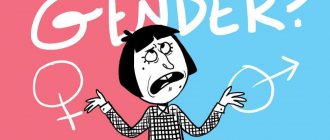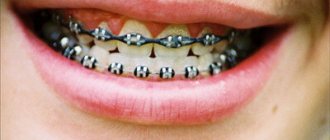What it is?
It is believed that a cramp is a reaction of the human body to an irritant. This may be an external or internal stimulus. The aggressive impact of certain factors on the body provokes pathology in a group of nerve tissues. They, in turn, transmit nerve impulses to muscle compartments throughout the body. Tonic convulsions are considered to be a type of convulsive seizure.
What's special? With such cramps, almost all human muscle tissues are involved, that is, the cramp is very extensive. This means that when a cramp occurs, there may be a spasm of the muscles that, for example, provide breathing. In this case, the outcome can be fatal if timely medical assistance is not provided.
Muscle cramps: treatment
Treating seizures involves fighting the underlying cause that caused them. Thus, with their neurogenic nature, drugs are used that eliminate autonomic dysfunction - sedative, tranquilizing and vegetotropic effects (Mezapam, Bellataminal, Sibazon, etc.). In the hysterical form of a convulsive attack, psychotherapy sessions are carried out and drugs are used to eliminate anxiety (Frenolone, Phenazepam, etc.) or a state of depression (Aminotriptyline, Azafen, etc.).
In case of epilepsy, the patient is prescribed for continuous use tablets for seizures that increase the content of inhibitory mediators: Finlepsin, Carbamazepine, Benzonal, etc., as well as dehydration drugs (Furasemide).
Local cramps are also treated by addressing the underlying problems - eliminating areas of muscle hypertonicity using novocaine blockades and physiotherapy.
Symptoms
Tonic convulsions, the symptoms of which can be varied, can still be identified. Main manifestations: pain in the body, difficulty breathing, flexion of the arm at the elbow joint, which occurs spontaneously, spasms of the jaw muscles, muscle contraction for a long time, dysfunction of the musculoskeletal system, body tension.
These are the main symptoms that appear in almost all patients. In this case, a person often throws his head back involuntarily. This causes muscle spasms in the cervical and back areas. One of the most unpleasant symptoms is involuntary urination or defecation. If you notice this symptom, you should immediately go to the hospital and not treat the gastrointestinal tract at home. The reason for this symptom is a spasm of the muscles of the body, which are responsible for retaining fluids.
It is worth noting that the symptoms listed above are very similar to those that patients experience during a seizure. A distinctive feature of tonic convulsions is their duration. Unfortunately, the spasms can continue for hours. It will take even longer for the body to return to normal.
It is important to remember that the described convulsions are a type of convulsive seizure, but the symptoms have their own characteristics.
Features of seizure activity in epilepsy
But the main disease that is first remembered when talking about convulsive syndrome is epilepsy. The cause of any form of seizures in this disease is abnormal, very high activity of electrical impulses between neurons in the brain.
Most often, epilepsy is accompanied by generalized clonic-tonic seizures. The patient usually anticipates their onset with the help of the so-called aura - the state before the attack. It is characterized by a heightened perception of sounds, smells, feelings of fear, anxiety, and an unusual taste in the mouth.
After this, as a rule, the patient loses consciousness, sometimes managing to utter a rather loud scream or a sound similar to a howl. After which a strong tonic tension appears in all his muscles, the jaws tighten, breathing becomes very difficult, the face turns blue and convulsive twitching begins. In this case, foam appears on the patient’s lips, and involuntary urination may occur.
After some time, breathing is restored, the face returns to its normal color, convulsive tremors become increasingly rare and gradually disappear. This seizure lasts no more than 3 minutes. After the cessation of convulsions, a twilight state of consciousness is possible. After which, as a rule, sleep occurs. Having woken up, the patient does not remember anything.
Causes
We have already figured out what tonic convulsions are. What are their reasons? The main cause of convulsions and seizures is a disruption of the human nervous system. However, today the exact cause of seizures is not known. But scientists have an assumption that the cause is increased excitability of the subcortical region of the brain. There is also a generally accepted list of the most likely causes of seizures:
- Disturbance of metabolic processes. There is a huge variety of pathologies associated with metabolic processes in the body, which can negatively affect the functioning of the brain. There are frequent cases of seizures due to insufficient calcium. The provoking factor may be oxygen deficiency in the brain, increased sugar, or the presence of toxic substances in the body.
- Epilepsy. This disease is very similar with tonic seizures that do not last long. The frequency of seizures largely depends on the severity of the disease itself. Typically the seizure lasts up to 5 minutes, during which the person loses consciousness.
- Infectious diseases. Even then, a seizure may occur. It usually starts with the facial muscles and then moves down. In this case, everything is accompanied by profuse sweat and rapid heartbeat. Most often, seizures occur with tetanus and polio.
- Pregnancy. The special condition of a woman’s body can contribute to the occurrence of seizures (clonic and tonic). The reason is cerebral edema, which occurs in late pregnancy. The seizure may be accompanied by weakness, deterioration of general condition and increased blood pressure.
- Disorders of the thyroid gland. Hormonal imbalances are another possible cause. Seizures usually occur in people whose thyroid gland has been completely or partially removed.
As we have already understood, the causes of seizures can be different, but the root of the problem lies in the functioning of the nervous system.
Causes of tonic seizures
Causes of seizures include:
- Disturbed neurology
- Diseases of the cardiovascular system, swelling.
- Infectious diseases
- Poisoning of the body
- Hysterics
- Sprains and microtraumas
- Overheating and lack of water in the body
- Depletion of the body in vitamins and minerals
- Diabetes, kidney disorders, impaired thyroid function.
Diagnostics
Tonic seizures can occur in both adults and children. In this case, it is very important to consult a doctor immediately. Very often, people attribute cramps during bowel movements, difficulty breathing, etc. to diseases of certain organs. However, it is not the case. If any symptoms of convulsive syndrome are detected, it is necessary to undergo examination by a surgeon, therapist, neurosurgeon, neurologist and psychologist. Based on the information collected, specialists will draw up an overall picture of a person’s health condition and determine the possible causes of seizures.
At the same time, it is very important not to delay going to the hospital, since tonic convulsions can happen at any time and at the most inopportune moment. The most dangerous situation is when such problems arise in the respiratory system.
Seizures in a child: causes
In children, the described muscle contractions occur more often than in adults. This is explained by the imperfection of the child’s nervous system and the structural features of the brain: its cells are easily excited, but the processes of inhibition are still unstable and immature.
Convulsive syndrome in children can be provoked by asphyxia of a newborn, birth trauma, the presence of diabetes mellitus in a nursing mother, encephalopathy, as well as infectious diseases of the nervous system.
But the reasons that caused convulsions in a child are not necessarily pathologies of the nervous system or brain. This could be a lack of calcium in the body or muscle problems. Often in children, these attacks are caused by high fever, a reaction to a vaccine (most often we are talking about DPT) or emotional and mental disorders.
Children
Seizures in children begin with a wandering gaze. The child quickly loses contact with the outside world. The symptom continues with the already familiar to us throwing the head back. Also, the child may involuntarily straighten and bend his legs and arms, and close his jaws. Externally, the baby may suddenly turn pale.
Children are more susceptible to seizures because their brains are still immature and the excitability of the nervous system is low. Under the influence of infections and toxins that enter weak blood vessels, convulsions may occur. Childhood seizures are divided into epileptic and non-epileptic. Sometimes the latter can transform into the first type. Seizures can also occur as a consequence of the vaccine.
Epilepsy of newborns
Up to one year, a baby may experience the following types of epilepsy seizures: small, large and nocturnal. During a minor attack, the child throws back his head and freezes in one position. His gaze is directed to one point. The baby does not respond to stroking and sound and rolls his eyes. His body temperature may rise.
A major seizure of epilepsy is manifested by the fact that the child stretches out, bends his legs and assumes a fetal position. Convulsions, loss of consciousness and respiratory arrest occur.
During a night attack, the baby suddenly awakens and screams. His face changes. After an attack, the child cannot fall asleep for a long time. Children suffering from epilepsy may lag behind their peers in development, their memory is impaired, and mental health problems occur.
Newborns
In newborns, the febrile form of the syndrome most often occurs. It is accompanied by high body temperature and is observed not only in infants, but also in children under 5 years of age. Febrile seizures most often go away with age and do not cause any particular discomfort.
Premature babies are most susceptible to tonic convulsions. The syndrome may be accompanied by vomiting, regurgitation, cyanosis and impaired breathing. Duration about 20 minutes. Very often, tonic convulsions in newborns are associated with asphyxia and birth injuries. Asphyxia causes swelling of the brain, resulting in pinpoint hemorrhages. In this case, immediate medical attention is needed, as brain atrophy may begin. Seizures in children can occur as a result of traumatic brain injuries during childbirth. There are also local tonic convulsions (on the face, hands, etc.), which disappear after the baby is removed from the mother’s womb.
Hand cramps are a problem that can be dealt with
Hand cramps can be classified as an occupational health problem, since they especially often affect office workers who spend a lot of time at the computer, musicians, tailors, athletes, etc. But doctors also name other reasons that can cause them:
- stress,
- disorders of the blood supply to the upper extremities as a result of osteochondrosis or problems with the cardiovascular system,
- hypothermia of the skin of the hands,
- food or alcohol poisoning,
- as well as an addiction to coffee.
Hand cramps usually occur in one hand, so if they appear on the healthy hand, massage the cramped hand. Rub your fingers, starting from the base, clench and unclench your fist, vigorously rotate your hand, tense and relax your fingers.
For those who experience muscle spasms periodically, doctors advise drinking chamomile or linden tea, which can relax them, or rubbing the areas prone to cramps with lemon juice twice a day for 2 weeks. If the problem begins to occur too often, you should contact a specialist to find out the true causes of the problem and select medications.
Cramps when stuttering
Tonic convulsions during stuttering bring enormous discomfort to the child. They are a spasm that lasts for a long time and prevents the child from speaking. May occur during speech. Tonic and clonic convulsions during stuttering differ in that the latter cause a short contraction of the muscles of the speech apparatus. The child’s speech in this case resembles talking in the cold, reminiscent of trembling.
There are three degrees of severity of stuttering seizures. In the first stage, stuttering and convulsions appear when a person speaks quickly or excitedly. Moderate severity means that the seizures are present even when the person speaks calmly. The severe stage occurs when the convulsions are prolonged and the stuttering is continuous.
How are seizures classified?
Depending on the nature of involuntary muscle contractions, they are divided into clonic, tonic and clonic-tonic. Tonic are contractions that force the limb to freeze in a position of flexion or extension. And clonic convulsions are characterized by a rapid change in muscle contraction and relaxation, leading to stereotypical movements (twitching) that have different amplitudes. Accordingly, clonic-tonic are phase changes of clonic and tonic contractions.
Depending on the prevalence of convulsive manifestations, they are divided:
1) localized (one muscle or a group of them) – arising from focal irritation of the motor areas of the cerebral cortex innervating any limb, face, etc.;
2) generalized (convulsions of the whole body) - they involve all muscles at once, are usually accompanied by a loss of consciousness and can be the final stage of convulsive activity of any type.
Depending on the etiology of the attacks, muscle contractions may be different in form, course and frequency. The characteristics of the condition after an attack and the data of laboratory tests also differ.
Treatment
Treating tonic seizures is not an easy task even for an experienced specialist. Professional help from doctors for seizures is mandatory. The doctor must determine the cause of their occurrence and prescribe treatment. While the patient undergoes tests to discover the cause, he is prescribed drugs to normalize blood pressure and sedatives. In emergency cases, medications are used to relieve seizures.
Treatment has three goals: maintaining vital functions of the body, getting rid of seizures and reducing intracranial hypertension.
At the same time, you should not ignore traditional medicine such as tinctures and ointments. There is no need to take radical measures, but it will be useful to support the body and calm the nervous system with herbal decoctions. Herbs such as clover, mistletoe, rhubarb leaves, sweet clover and chamomile are great to help relieve symptoms.
What to do about leg cramps?
Of course, if you have regular tonic convulsions, you should definitely consult a doctor for a full examination and find out their causes. You can try to relieve short-term spasms yourself.
So, if this unpleasant phenomenon bothers your lower limbs, you need to:
- pull the toe of the straightened leg toward you;
- put your feet on the cold floor and walk barefoot;
- rub your foot with warming ointment;
- do a self-massage of the foot - from the toes to the heel, or the calf - from the heel up to the knee;
- if there are no contraindications, take Aspirin tablets (they will improve blood microcirculation in the vessels of the legs).
In this case, homemade ointment for seizures will also help. It is made from 2 tsp. mustard and 1 tsp. olive oil. This paste is applied to the suffering muscles, and relief occurs almost immediately.
Urgent Care
An attack of tonic seizures can happen at the most inopportune time. That is why it is very important to know how to help a person in such a situation, because respiratory convulsions may occur, which is deadly. The first thing to do is call the doctors. Only after this should you begin providing first aid. It is very important to provide a person with an influx of oxygen, so it is advisable to open the windows and place the person closer to a source of fresh air. This will allow you to avoid oxygen starvation, as well as a number of negative consequences that arise from this. If a person is dressed too warmly or the clothes are too tight, you will have to undress him a little to relieve the spasm. It is also important to ensure that the person does not damage his tongue during a seizure. To do this, place a rolled up towel or handkerchief in your mouth.
The person should lie on their side as there is a risk of vomiting. Positioning on your side will avoid possible suffocation from vomit. You should put something soft under your head.
Clonic seizures
Characteristic signs of clonic seizures:
- periods of contraction are followed by periods of muscle relaxation;
- characteristic twitching of body parts appears;
- Self-determination of this type of seizure is not difficult.
The location is the same as for tonic convulsions.
Characteristic position during an attack
The upper and lower limbs are bent, the spine is arched. A calm twitching of spasmodic muscles is noticeable to the naked eye. Features include stuttering, which occurs due to spasms of the muscles of the respiratory system.
help yourself
Sometimes a person has to provide first aid to himself, even through pain, if no one is nearby. If a generalized convulsion occurs, that is, one that spreads to the entire body, you will have to wait for outside help. If the cramp is local, then self-massage should be performed. It should be short-term, but the impact must be firm. If a person is prone to seizures, you should always have a needle with you to prick a specific part of the body and relieve tension.
Clinical picture of the attack
Tonic seizures often begin with a tonic contraction of the neck muscles, resulting in a fixed head posture, eyes wide open, mouth open, or jaw clenched. The subsequent contraction of the respiratory muscles and abdominal muscles leads to a cry “without one’s own voice” and a short period of apnea. As a result of tonic contraction of the proximal muscles of the upper extremities, the shoulders rise and the arms abduct. There may be asymmetrical tonic seizures, ranging from slight rotation of the head to tonic spasm of all muscles on one side of the body. It happens that a tonic attack ends in a clonic phase. Contractions of the eye muscles lead to wide opening of the eyes, mydriasis. Usually, physical activity is accompanied by apnea, which can be quite pronounced. The attack may result in a fall, leading to various injuries.
Tonic attacks are usually potentiated by sleep and can be repeated several times during the night. They develop more often during non-REM sleep than during wakefulness, and never occur during REM sleep. During a tonic attack, the patient loses consciousness, but can awaken from the phase of superficial sleep. Being very short, the attacks are often not noticed. The duration of tonic attacks is usually several seconds (up to 1 minute), with an average of about 10 seconds. If the attack lasts longer than a few seconds, consciousness is usually lost. Postictal disturbance of consciousness in the form of confusion, weakness and headache is characteristic. Typically, the longer the attack, the more pronounced the postictal disturbances of consciousness.
A generalized burst of fast spikes in a patient with tonic seizures.
Atonic attacks begin suddenly without warning, and if the patient is standing, they immediately lead to a fall. As a result of a total loss of muscle tone, the patient cannot prevent his own injury at the time of a fall, which often happens. The attack may be fragmented, causing the head to fall and the lower jaw to sag or the limbs to fall. During atonic attacks, a short-term lack of activity is recorded on the EMG. When falling backwards, consciousness is impaired, but the patient can come to his senses immediately after the fall.
Tonic and atonic seizures occur in patients of different ages. More often they debut in children, making up the picture of one of several epileptic syndromes
Share the link:
www.38i.ru
Epilepsy
Epileptic seizures
Related:
- Heart attack
- Partial seizures and the kindling model
- Single (isolated) attacks
- Drugs for the treatment of primary generalized tonic-clonic seizures. Drugs of choice in the treatment of absence seizures
- Epilepsy or psychogenic seizures?
Next:
- Epilepsies with onset at any age: symptomatic and probably symptomatic focal epilepsies
- Clonic and Tonic-clonic seizures
- Tonic and atonic seizures/ Patterns, diagnosis, etiology
Preventive measures
Sometimes seizures are a consequence of a serious illness or injury. However, involuntary contraction of the arm muscles, for example, may be a consequence of an indifferent attitude towards one’s health. To prevent seizures, it is very important to give the whole body feasible and regular exercise. Sport is the best prevention. Experts especially recommend jogging. Equally important is a diet that should not contain too much junk or fatty food. You should also exclude coffee, alcohol and tobacco from your diet.
Summing up the article, I would like to say that the health of each person is in his own hands. Lead a healthy lifestyle, eat the right foods and walk more in the fresh air. Equally important is the advice to be less nervous and not worry about trivial matters.
Definition
Tonic seizures are short and consist of a sudden increase in muscle tone in the extensor muscles. If the patient is standing, the attack usually results in a fall to the ground. The duration of these attacks is longer than the duration of myoclonus. On the EMG, during an attack, muscle activity increases sharply. An atonic attack is a sudden loss of muscle tone. Loss of muscle tone may affect a group of muscles, such as the neck muscles, causing the patient to nod, or may involve the entire trunk, causing the patient to fall.
Symptoms of tonic contractions
Tonic convulsions can be local or generalized. Their manifestation depends on this. If a local contraction of muscle fibers is observed, the following symptoms appear:
- severe and sharp pain;
- muscle spasm;
- the muscles become hard to the touch;
- if the facial muscles are involved, then facial expressions change significantly.
Generalized contractions affect the limbs, trunk, face and neck. In this case, the following obvious signs can be observed:
- arms are bent;
- muscles are tense;
- unnaturally elongated body;
- the head is thrown back;
- legs straightened;
- in rare cases, loss of consciousness occurs.
Quite often, such manifestations occur in patients with epilepsy, but other pathologies can also provoke them:
- rabies;
- tetanus;
- hysteria;
- uremia and others.
If cramps occur due to a serious pathology, then it is necessary to undergo appropriate treatment, but with rare involuntary contractions in the legs, you can try to help yourself at least before visiting a doctor.










